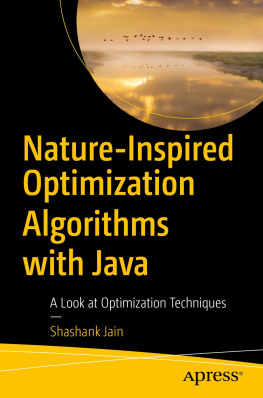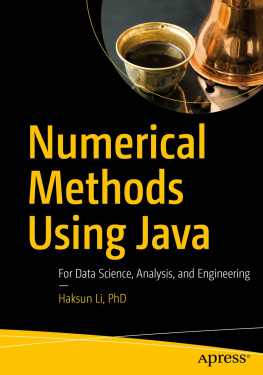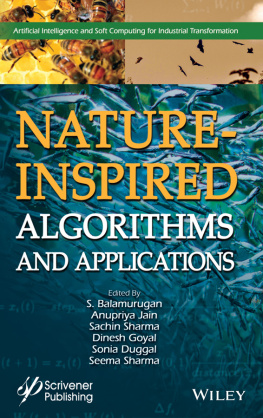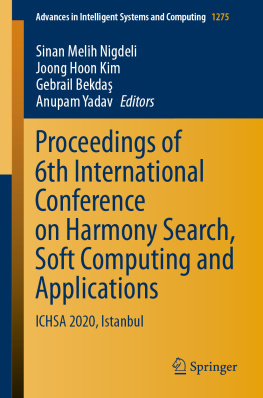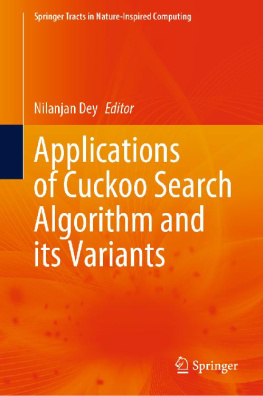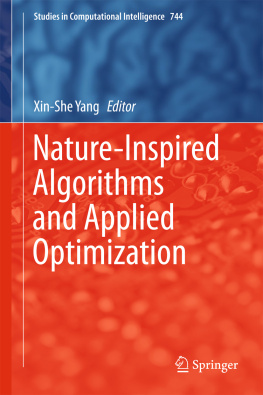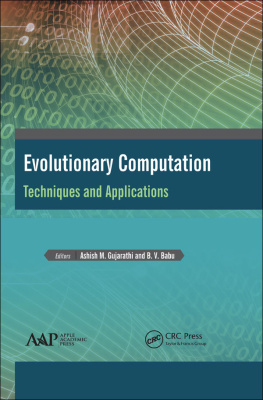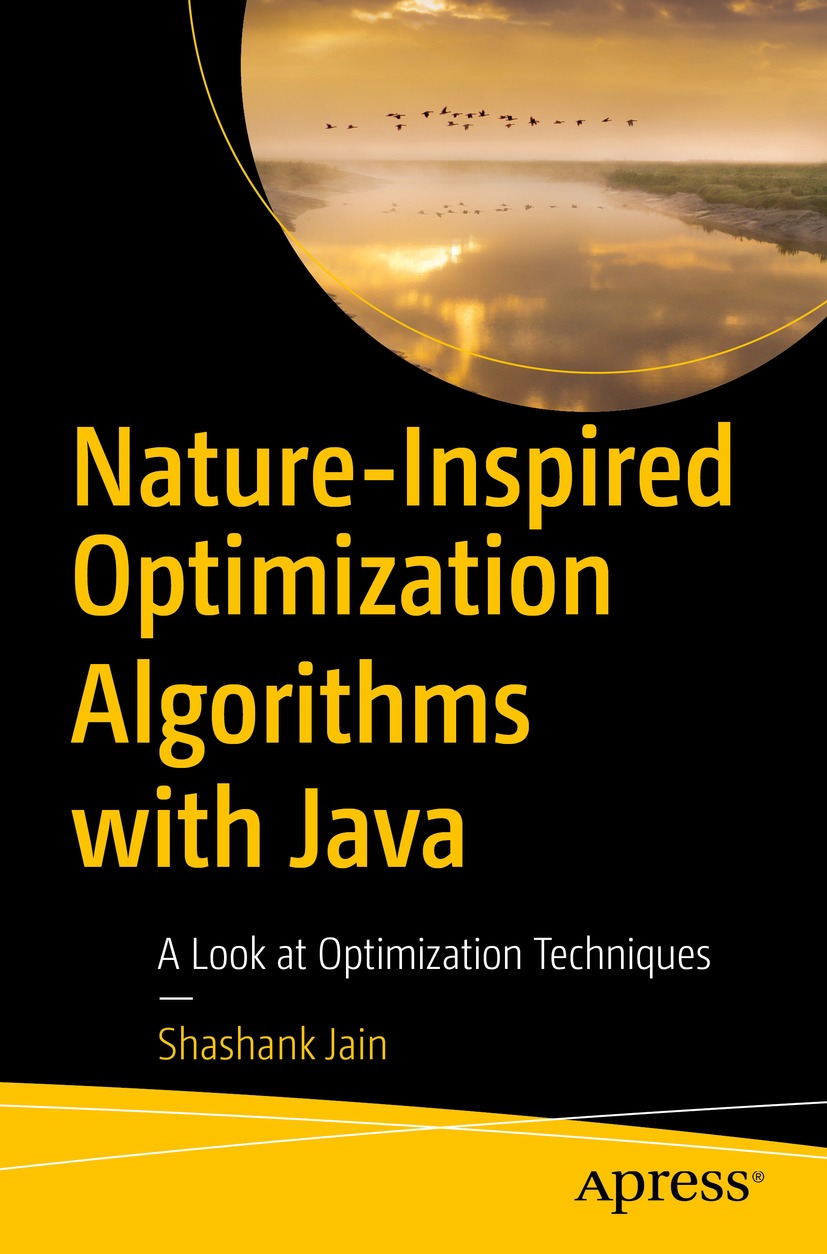Shashank Jain - Nature-Inspired Optimization Algorithms with Java: A Look at Optimization Techniques
Here you can read online Shashank Jain - Nature-Inspired Optimization Algorithms with Java: A Look at Optimization Techniques full text of the book (entire story) in english for free. Download pdf and epub, get meaning, cover and reviews about this ebook. year: 2021, publisher: Apress, genre: Computer. Description of the work, (preface) as well as reviews are available. Best literature library LitArk.com created for fans of good reading and offers a wide selection of genres:
Romance novel
Science fiction
Adventure
Detective
Science
History
Home and family
Prose
Art
Politics
Computer
Non-fiction
Religion
Business
Children
Humor
Choose a favorite category and find really read worthwhile books. Enjoy immersion in the world of imagination, feel the emotions of the characters or learn something new for yourself, make an fascinating discovery.
- Book:Nature-Inspired Optimization Algorithms with Java: A Look at Optimization Techniques
- Author:
- Publisher:Apress
- Genre:
- Year:2021
- Rating:3 / 5
- Favourites:Add to favourites
- Your mark:
Nature-Inspired Optimization Algorithms with Java: A Look at Optimization Techniques: summary, description and annotation
We offer to read an annotation, description, summary or preface (depends on what the author of the book "Nature-Inspired Optimization Algorithms with Java: A Look at Optimization Techniques" wrote himself). If you haven't found the necessary information about the book — write in the comments, we will try to find it.
Youll start with an introduction to the hidden algorithms that nature uses and find the approximate solutions to optimization problems. Youll then see how living creatures such as fish and birds are able to perform computation to solve specific optimization tasks. This book also covers various nature-inspired algorithms by reviewing code examples for each one followed by crisp and clear explanations of the algorithm using Java code. Youll examine the use of each algorithm in specific industry scenarios such as fleet scheduling in supply chain management, and shop floor management in industrial and manufacturing applications.
Nature-Inspired Optimization Algorithms with Java is your pathway to understanding a variety of optimization problems that exist in various industries and domains and it will develop an ability to apply nature-inspired algorithms to find approximate solutions to them.
What Youll Learn
- Study optimization and its problems
- Examine nature-inspired algorithms such as Particle Swarm, Gray wolf, etc.
- See how nature-inspired algorithms are being used to solve optimization problems
- Use Java for solving the different nature-inspired algorithms with real-world examples
Software developers/architects who are looking to hone their skills in area of problem solving related to optimization with Java.
Shashank Jain: author's other books
Who wrote Nature-Inspired Optimization Algorithms with Java: A Look at Optimization Techniques? Find out the surname, the name of the author of the book and a list of all author's works by series.

